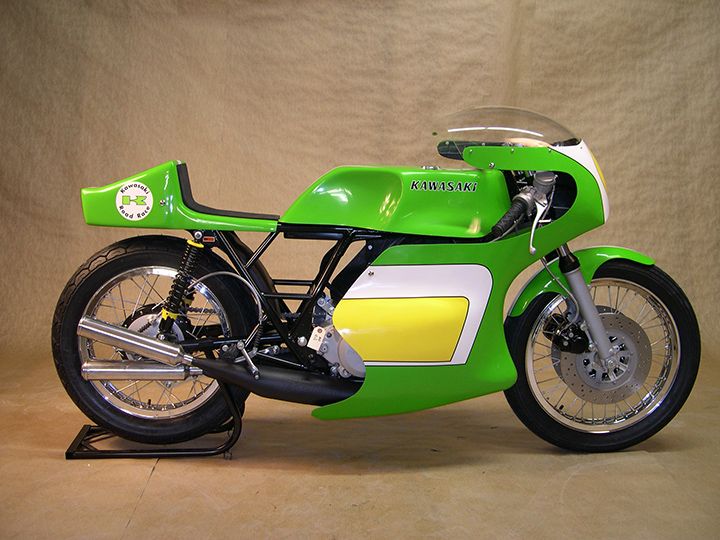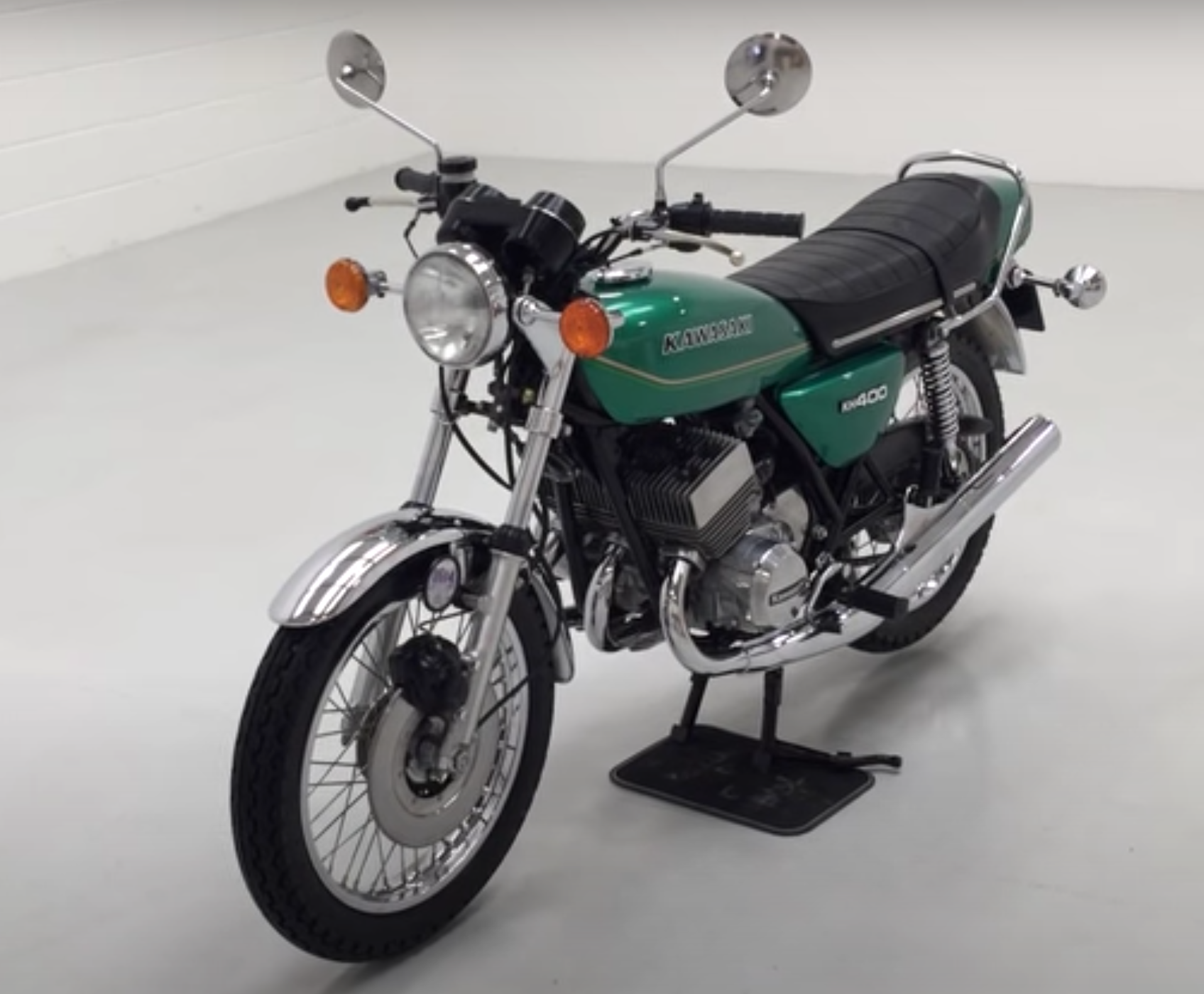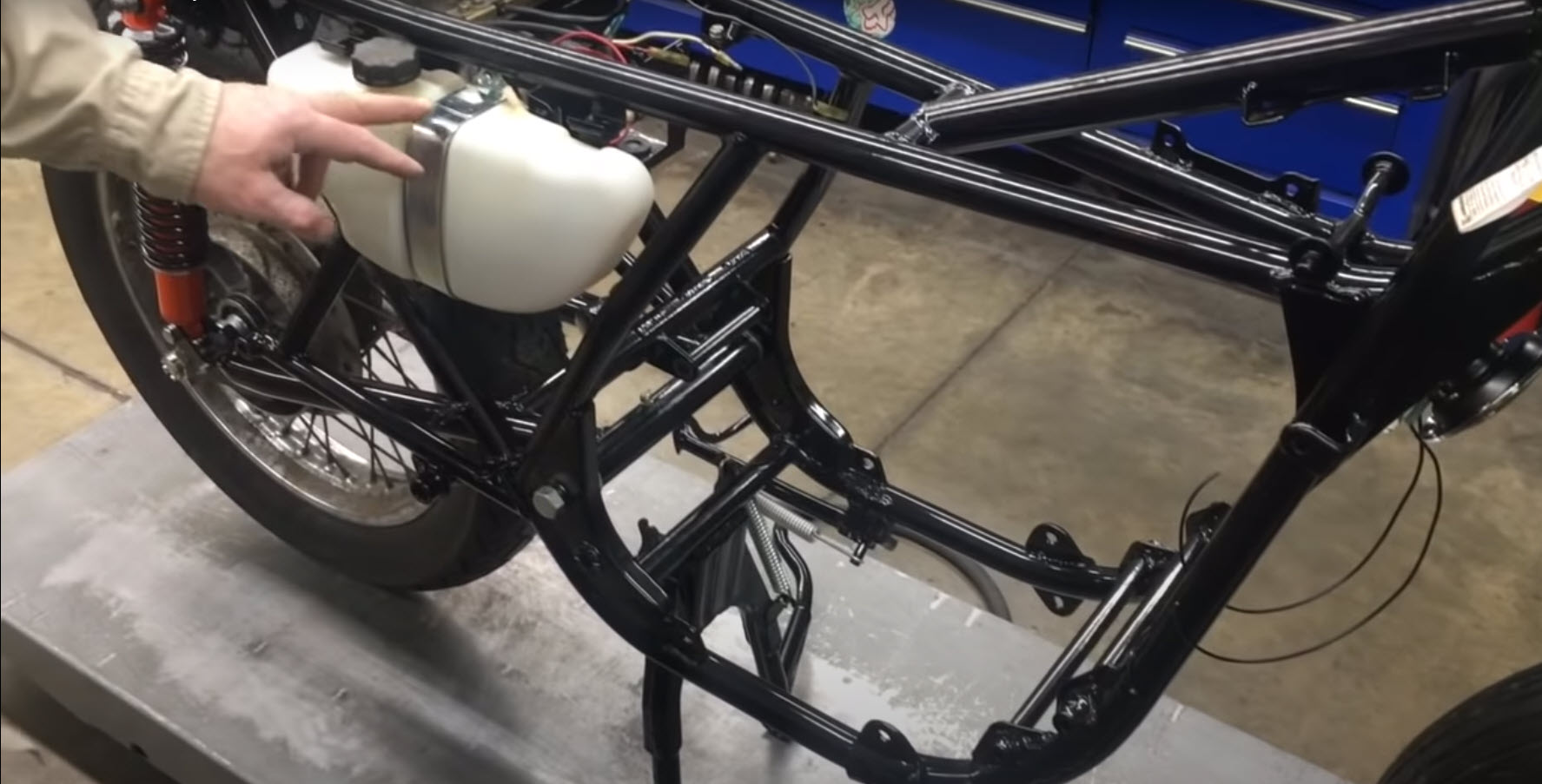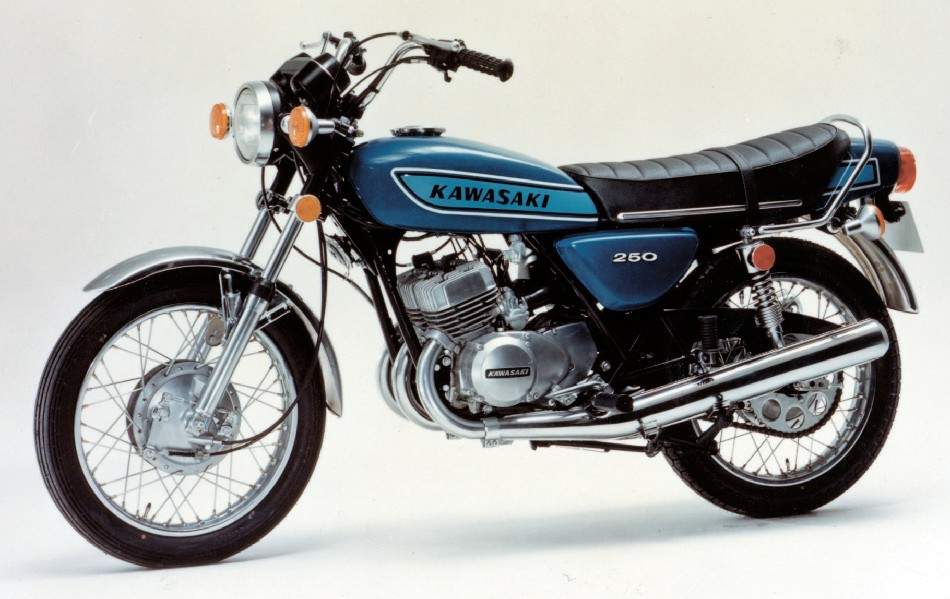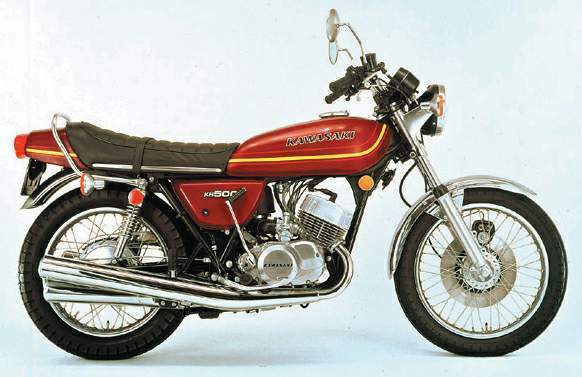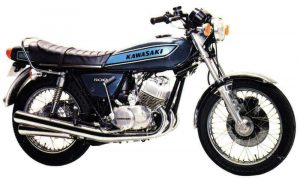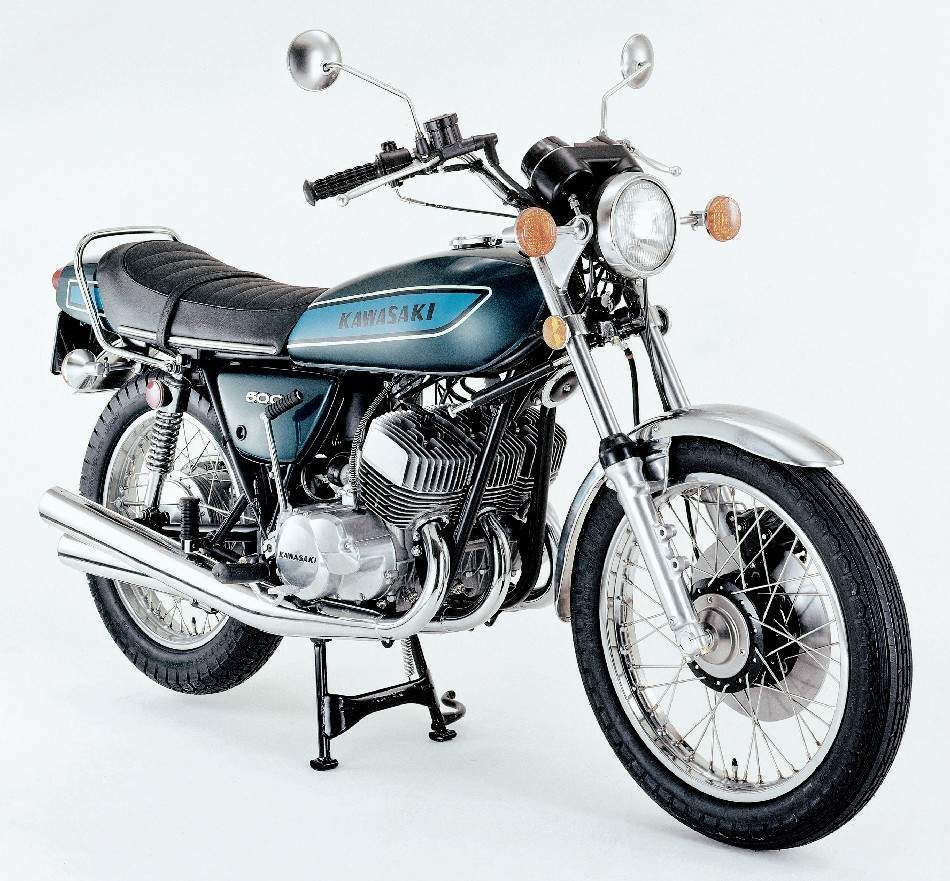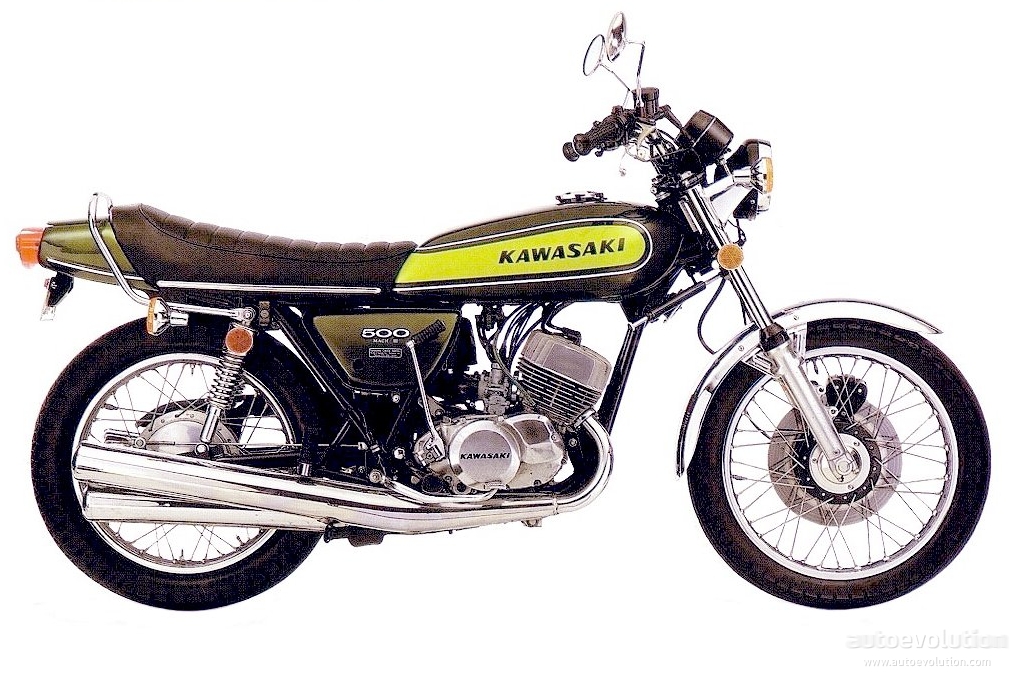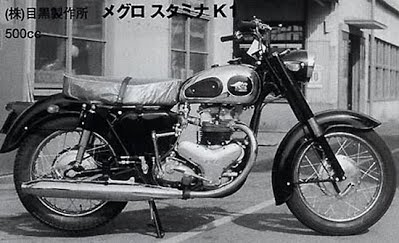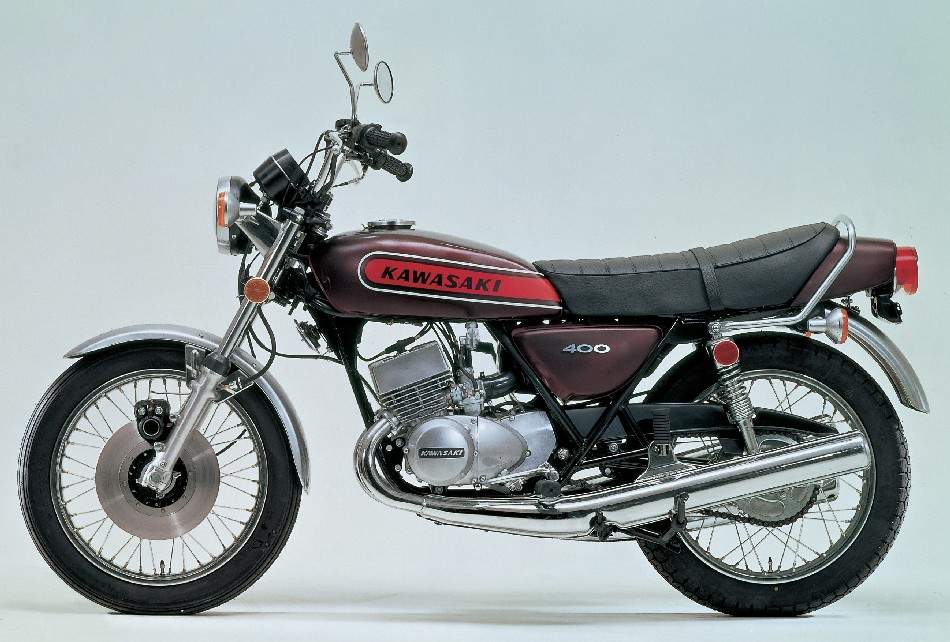The KH 500 was launched to the public in 1976, the initials in the name stood for “Kawasaki Highway”.
It was available in two colors: Burgundy and Copper. It was an improvement from the H1-series with its three-way fuse system, fastening gas cover, and enhanced braking system.
1976 KH500-A8
Other changes included the front forks, front wheel, footstools, handlebar grips, and headlamp. The latter was shaped into a seven-inch piece that included in the 750 and 900 models, too.
The company saw itself in obligation to modify the mufflers and air cleaner system yet again because of the emission control requirements in America, but the use of these obstructive parts and reduced jets in the carbs suppressed the performance of …



